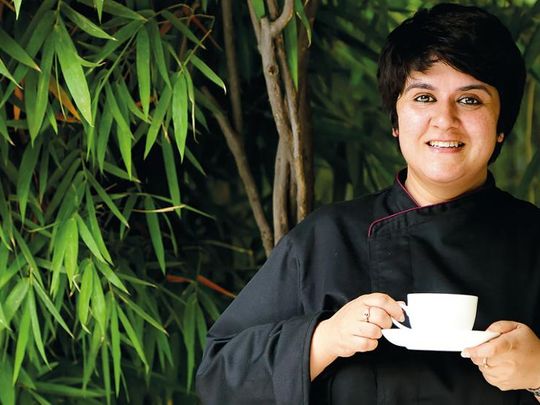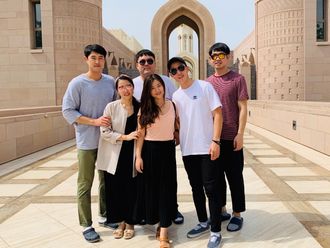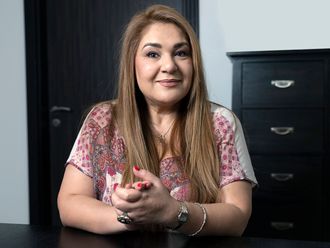
Anamika Singh, grew up on a tea estate and learnt the finer nuances of brewing that perfect cuppa in the fields from her father, a tea specialist. She blended flowers and herbs with tea leaves to create her own brand and can drink 12 to 15 mugs of tea in a day – cups are just too small.
What’s your earliest memory of tea?
As far as I can remember, the one thing that kept us together as a family was tea. There were always conversations around tea at home. I recall many happy moments sipping cups of tea with my parents and brother in the evenings and again more tea talk at social gatherings with my father’s friends. Tea was such an integral part of our lives.
How did you train to become a tea taster?
I learnt everything from my father. He is a ‘guru of tea’ with 50 years of hands-on experience working at tea estates in Darjeeling, India. I couldn’t have asked for a better teacher. After completing my schooling I enrolled for a distance-learning programme for my graduation and concentrated on learning everything about tea by working on the estate with my father.
I started from scratch – by going to the fields at 4am, understanding the varieties of bushes, the basics of plucking, the soil, the shade trees, the water and the bio-dynamics of the estate. Then I learnt about the manufacturing process of tea leaves at the tea factory such as the withering, fermentation, rolling, drying, sorting and finally the packaging. It was crucial that I get my palate trained to taste the tea and so I tasted different kinds of teas every single day for several years. I also interned with J Thomas and Co, one of the largest tea auctioneers in the world, based in Kolkata, India.
What does a tea taster do?
A tea taster has the knowledge and the ability to discern a good cup of tea from a bad or an average one. A tea taster tastes tea, observes the dried leaf, evaluates and gives a verdict on that particular tea. It takes endless tea-tasting sessions and years of experience to acquire that knowledge.
What goes in preparing that perfect cup of tea?
Everything, from plucking a good-quality tea leaf, preferably sourced from a single tea estate, to storing it, to brewing it at the right temperature can affect the taste of your tea. For instance, if the tea is not stored well, moisture can ruin the tea, thus hampering the perfect cup. It is equally important to know the art of making a good cup of tea. No matter how expensive the tea is and how well you have stored it, if you do not give emphasis to the quantity of tea added to make a cup, the correct temperature of water, the right pH balance of the water, the number of minutes you allow the tea to infuse you will not get your perfect cuppa.
How do you like yours?
It depends on my mood, the weather and who I am sipping it with. I love to have a mug full of tea all the time on my desk and it is usually a version of green tea infused with flowers and herbs. When winter sets in, I prefer my favourite Pinewood smoked tea, sourced from our own tea estate, the Manjhee Valley in Himachal Pradesh, India. I do not like tea with milk or sugar, except once in a blue moon.
On any given day, how many cups of tea do you taste?
As far as tasting is concerned it could be anywhere from 20 to 70 cups in a day. As for consuming cups of tea, I have anywhere between 12 to 15 mugs of tea. Cups don’t do it for me as I find the quantity too small.
Does a tea taster requires a strong sense of taste or can it be acquired with training and time?
Yes, a tea taster does require a strong sense of taste and smell. What he acquires enhances the inherent quality.
How did Anandini Himalaya Teas come about?
It took us a year to research the herbs, flowers and spices we blend with tea. We had been exporting tea from our tea estate in Dharamshala, Himachal Pradesh. I wanted to offer tea connoisseurs the same quality of tea with the natural goodness of herbs and flowers. Along with my brother Kunal Singh, who is an integral part of Anandini Himalaya Tea, I worked closely with a designer based in Paris called Anil Abhimanyu Sharma to create the look and design of the brand. We also opened Anandini The Tea Room, a haven for tea lovers, in Delhi in 2014, where we conduct workshops and tea tasting events. Yet another extension of our celebration of tea are our tea trails on our estate in the hills.
Describe a day in your working life.
I divide my time between Delhi and our tea estate in Himachal Pradesh, so my routines vary accordingly. In the city, my day could begin with tea tastings, meetings with prospective clients, attending events curated by us or at workshops with tea lovers. In the course of the day there is a lot of interaction with the food and beverages industry, which means a lot of tastings. I often end the day with a book and a huge mug of tea imagining various possibilities of creating new infusions. When I am on the tea estate, I connect back with the roots of tea-making by being involved in the manufacturing process in the tea factory the entire day.
How rewarding has your career been?
I have had a fascinating journey that began with tea talks at home to eventually working hands-on with tea leaves and then curating workshops on tea. In a nation that thrives on milky chai, it is quite challenging. The best rewards are the changed expressions on people’s faces – from anxiousness when asked to sip tea without sugar and milk to surprise and exhilaration as they say, “oh my gosh, that feels so refreshing”.
What challenges do tea tasters face?
The biggest challenge is to make a nation like India that thrives on chai get acquainted with tea without sugar or milk in its true form. My endeavor has been to educate people about the beverage, that there is much more to tea than just chai and Assam and Darjeeling tea. I have been confident about my work and that has been my strength against any odds that came my way.












